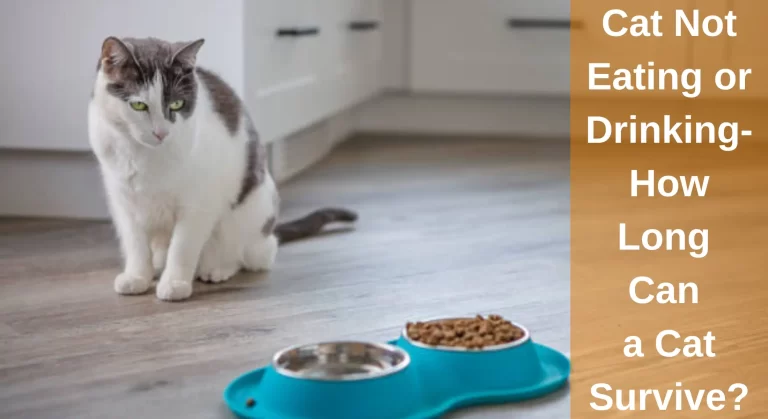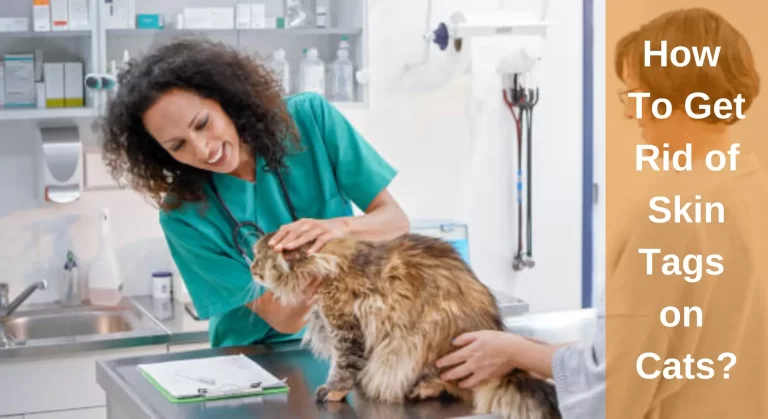Why Is My Cat Walking Weird On Its Back Legs?[Wobbly, Weak, And Stiff]
What makes my catwalk In unusual way on Its back legs? Cats are known for their grace and agility, but what happens when your cat walking weird on its back legs? It’s not uncommon for cats to experience difficulty with their hind legs, If you’ve seen your cat walking strangely on its rear legs, it’s important to identify the underlying problem. This behaviour is unusual and usually indicates that there is a problem.
There are several reasons why your cat might be walking weirdly on its back legs, including injuries, arthritis, neurological problems, muscle weakness, obesity, and Hip Dysplastic.
Since cats are skilled at masking their suffering, changes in mobility may be one of the first and only signals that a cat is in distress. Stiffness, weakness, and wobbliness are the main mobility issues affecting the hind leg.
In this article, we’ll explore the underlying causes of lameness or limping in cats, and also assist you in identifying what’s wrong with your cat and what you can do to help them to regain its happy and energetic nature in no time.
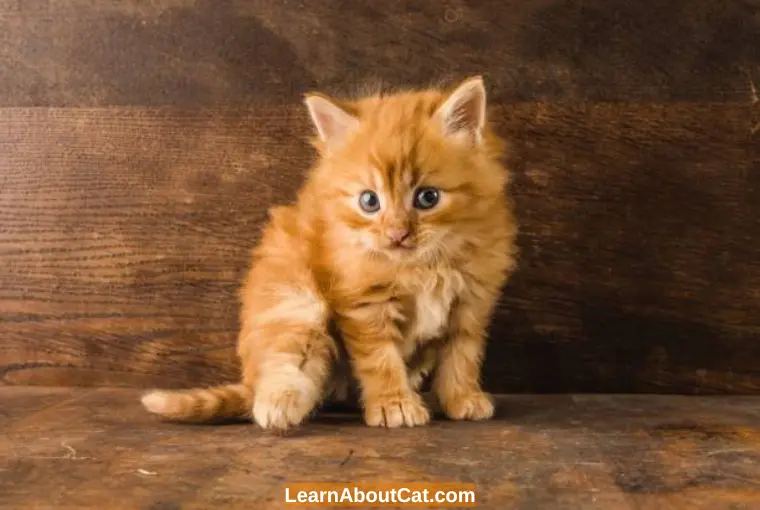
Understanding Feline Anatomy
Before we dive into the possible causes of your cat’s strange gait, it’s essential to understand a bit about feline anatomy. A cat’s hind legs are connected to the spine by a series of muscles, tendons, and ligaments. This connection enables the cat to jump, run, and walk smoothly. However, if any of these components are damaged, your cat may experience difficulty walking.
Cats are digitigrade animals, which means they walk on their toes rather than their entire foot. This is why cats have distinctive gait and appear to be walking on their tippy toes. When a cat walks, it uses its hind legs to push off the ground and propel itself forward. The front legs are used for balance and steering.
Rear Leg Problems in Cats
Organ failure, nerve damage, and problems with the bones, ligaments, and muscles can all be factors in the development of weakness and stiffness. It can be brought on by an ongoing condition like arthritis or an injury (including sprains, strains, and shattered bones).
Cats can either acquire weak and stiff rear legs suddenly or over time. The indicators include:
- Lameness (limping)
- Standing with difficulty Walking stiffly or slowly
- Standing with one leg raised awkwardly and trailing the paws behind are legs that are Crumpled or giving out.
- Completely unable to move the legs owing to paralysis
- A dislike of heights, climbing, or exercise
- Playfulness strange vocalisations, like yowling, greater amounts of sleep than usual
Why Is My Cat Walking Weird On Its Back Legs
A cat’s rear legs may progressively become less flexible or rigid for a variety of reasons. You’ll notice that your cat has tougher trouble walking over time. The onset of some diseases may take weeks, months, or even years.
Older or senior cats have more back leg issues compared to younger cats. But you shouldn’t write off a weak or stiff back leg as a sign of ageing. Although becoming older is not dangerous, it does raise a cat’s risk of getting several diseases.
Degenerative conditions like arthritis cause difficulties with the rear limbs to slowly develop in cats. However, if left untreated, some of the reasons, such as kidney disease and brain tumours, can be fatal.

1. Arthritis
One common sign of arthritis is joint inflammation. This inflammation makes movement much more uncomfortable and difficult overall, which also affects joint mobility. Arthritis usually affects the hip bones and joints in the rear legs, making walking uncomfortable and stiff.
Arthritis is typically to blame for an aged cat’s odd gait as it walks on its back legs. It is a problem that becomes worse over time as your cat ages and puts stress on its joints and bones.
2. Diabetes
If cats are overweight, they are more prone to developing diabetes. In this disease, the body is either unable to produce insulin or is unable to recognise it and respond appropriately. Insulin is a crucial hormone that assists in controlling blood sugar. The absence of insulin causes a rise in blood glucose levels.
One of several issues brought on by elevated blood sugar levels is back leg neuropathy. The high levels of glucose damage the nerves in your cat’s legs and paws, causing neuropathy. As a result, cats’ rear legs will be weak, unsteady, and wobbly as they move.
3. Injury or Trauma
Other than ongoing and emerging medical issues, short-term issues might also be to blame for your cat’s peculiar sideways gait. Such symptoms are frequently brought on by physical trauma, such as your cat tearing a muscle in its legs or hips, shattering or cracking a bone, or dislocating a joint.
Such injuries are common in cats. They are curious creatures that may get into all kinds of trouble! If they were spelunking at night, they might have unknowingly been hit by a car. They could have engaged in a cat or animal fight, or perhaps a pushy child gave your cat a little too much pressure.
Also, Check Out: What Are Emotionally Traumatized Cat Symptoms -And How To Help?
4. Hip Dysplastic
Hip dysplasia is another joint condition that only affects the hips. A healthy hip joint offers a lot of movement freedom because of its ball and socket construction. Cats with hip dysplasia have more difficulty moving because the ball and socket are not aligned properly.
Only the mother or father may pass it on to the kittens because this sickness is hereditary. As a result, it happens more commonly in purebred cats, especially those that are Maine Coon, Persian, or Himalayan. On the other side, mixed breeds are less likely to get this disease.
Other breeds may be more prone to spinal issues, which can also affect a cat’s ability to walk properly. For example, some breeds may be more susceptible to spinal cord injuries, intervertebral disc disease, or other spinal abnormalities.
5. Muscle Loss and Muscle Weakness
If your cat is walking weirdly on its back legs, it could be due to muscle weakness. This can be caused by a variety of factors, including a lack of exercise, poor nutrition, or a medical condition that affects the muscles. Cats with muscle weakness may have difficulty walking, appear lethargic, or have a reduced range of motion.
Muscle wasting, also known as muscular atrophy, occurs often. Sarcopenia, or age-related muscle loss, affects 40% of our senior feline friends, so this is particularly true for older cats. The fact that older cats naturally have less muscle mass than younger cats helps to explain why they regularly lose weight in their hindquarters.
Muscle atrophy, however, might be a side effect of another chronic illness. Cachexia is the term for the type of muscle loss that occurs in certain conditions.
Younger cats may also have muscle atrophy if their diets are deficient in some key nutrients. Trauma and injury may hasten the skeletal and muscular degeneration of their hindquarters.
Check Out: My Cat Has a Fever and is Lethargic: Sings of Fever in Cats
6. Neurological Problems
Another reason why your cat might be walking weirdly on its back legs is due to a neurological problem. This could be caused by a spinal cord injury, nerve damage, or a disease that affects the nervous system. Cats with neurological problems may have difficulty walking, lose their balance, or appear wobbly.
The specific area of the cat’s brain responsible for controlled and voluntary movement is known as the motor cortex. This region of the brain sends signals to various areas of the body, telling them how to move. The physical element will respond by moving and giving the brain feedback.
If the neurological link between the motor cortex and the cat’s hips or hind legs is compromised in any way, the cat may become unsteady on its hind legs. They won’t be able to control where their paws are placed properly; thus, their walk will be rather unstable.
They could also trip over obstacles considerably more frequently and drag their back paws on the ground.
7. Panosteitis
Panosteitis causes inflammation in the long leg bones of cats. Between the ages of 5 and 18 months, it primarily affects kittens, and while it is more common in dogs, it can also happen to cats.
Due to the illness’s rapid bone formation, larger cat breeds like Maine Coons are more commonly afflicted. The front legs are usually affected, while the back legs might also be hurt. These are indications of
- Strolling slowly or shakily
- Lugging stiffly and with a limp
- Lack of appetite and weight loss
- Fever
- Depression
Although unpleasant, panosteitis is not dangerous. The cat does not pass away from it, nor is there any underlying illness that causes it. While lesser cases of panosteitis might last only a few days, more severe cases can endure for several months.
8. Anaemia
When a cat’s red blood cell count is low or when the haemoglobin that should be present in those cells is lacking, that cat is said to be anaemic. Anaemic cats are unable to transport oxygen in their blood adequately.
Haemoglobin is a substance found in red blood cells that bind to oxygen and delivers it to its final destination. Cats begin to breathe quickly to compensate for the body not receiving enough oxygen.
9. Bone Cancer
Cats are susceptible to developing a range of bone tumours. Osteosarcoma is the most prevalent form, accounting for more than 95% of cases. Any bone in a cat’s body is susceptible. Any cat might develop bone cancer; however, older cats are more susceptible.
The ability to walk will be gradually lost in a cat with bone cancer in its rear limb. The most prominent symptoms of a lame limb are an ungainly stride and an unwillingness to bear weight on that limb.
Cats may also have trouble moving if they have bone cancer in their spine or skull. Seizures and head wobbling are among the neurological symptoms brought on by the pressure that skull cancer exerts on the brain. You should also be aware of the following:
- An enlargement or substantial mass anywhere else on the body
- Diminished appetite
- Lethargy
Veterinarians can detect bone cancer through physical examinations and radiography.
10. Blood Clots
Although blood clots can develop at any moment, they often do so in cats with cancer or cardiac issues. There are known causes for just 3% of feline blood clots.
Blood can’t flow smoothly in these circumstances as clot formation in an artery or vein occurs. As a result of which, a saddle thrombus is formed in the back legs of cats. Cats may tend to hide; they yowl. Also, they experience the following:
- Rapid respiration and a weak pulse solid to the touch hind legs
- There is a hint of purple or bluish colour on the back paw pads.
11. Chronic kidney disease
Kidneys are the filtrate organs for the body’s blood to remove toxins. In the case that this vital step is skipped, the cat finally becomes poisoned. According to the Journal of Small Animal Practice, cats over the age of 15 are particularly vulnerable to it.
Chronic renal failure in cats causes a slow decline in health. Cats with renal disease first exhibit mild symptoms, which worsen over time. You might notice the following signs:
- Inadequate appetite
- Loss of weight increased thirst and urination
- Vomiting
- Constipation poor breath
- Brown tongue
As the condition progresses, muscle pain and weakness begin to appear. The cat may look wobbly on its feet, unable to walk, or hesitant to do so. Blindness may also occur if the disease develops to its last stages.
12. Heart problems
You might be shocked to learn that heart illness is included on this list. After all, a cardiac condition only affects the heart and circulatory system, not your cat’s legs! Cats with cardiac issues struggle to get blood to move throughout their bodies, which stops some organs from receiving enough oxygen.
The blood supply to your cat’s back legs, one of its extremities, might occasionally be insufficient in cats that have cardiac issues. As a result, their stride could change and become awkward. A variety of other symptoms, such as the following: are usually present in cats with heart disease:
Refusing to move or exercise, Issues with breathing or lack of breath, fainting and racing heart while at rest or lethargy.
Additionally, cats with cardiac issues are more likely to develop blood clots. A blood clot called a saddle thrombus can form close to the aorta’s pelvic end. The danger of paralysis in the back legs increases if this artery, which supplies blood to the lower body, is blocked because the back legs are completely cut off from the blood supply.
13. Bacterial or Viral Infection
Infections may also result in weariness and unstable gait. Typically, a disease that affects the brain or spinal cord also affects the ability of the hind legs to operate correctly.
Several pathogens, including bacteria and viruses, cause infection. Open wounds, tainted food or drink, and flea or tick bites are common ways that people get bacterial illnesses. Conversely, close contact with a cat that already has the sickness can transfer viral diseases rather often.
Also, Check Out: My Cat Sounds Congested When Breathing: Noisy Breathing in Cats
How Can I Tell If My Cat is in Pain When Walking?
There are several signs that may indicate that a cat is experiencing pain when walking. These can include:
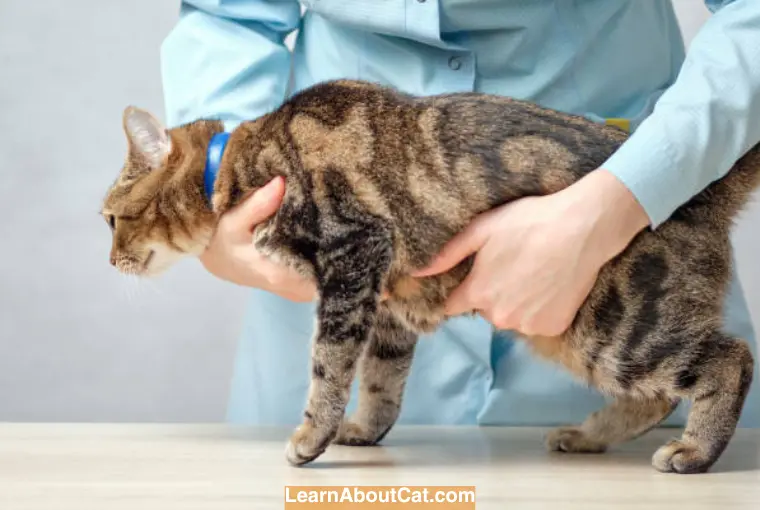
- Limping or favouring one leg over the other
- Walking with a stiff gait
- Walking more slowly than usual
- Avoiding jumping or climbing
- Yowling or meowing while walking or moving
- Hunching their back or tail
- Flattening their ears or showing other signs of discomfort or distress
It’s worth noting that cats are very good at hiding their pain, so it’s important to pay close attention to their behaviour and body language. Even subtle changes in their gait or movement can be a sign that something is wrong.
Tips for Assisting a Cat with Weak Back Legs
If your cat’s rear legs are weak, unsteady, or stiff, take them to the doctor. This is particularly crucial if the symptoms have abruptly appeared or are severe. Getting a diagnosis is essential since cats’ back limb issues can have many different causes. Your veterinarian might need to do a blood test or scan, such as an x-ray.
The next step will be determined depending on what’s causing your cat’s mobility issues. Medication, surgery, or other interventions like a cat wheelchair can all be used as treatments. While there is no known treatment for some diseases, such as arthritis, various drugs help lessen discomfort.
- Make your cat as comfortable as you can while you wait for a diagnosis. For instance:
- Move your cat’s bed to the ground if it is high up.
- Implement quick, calm playtimes
- Keep your cat’s food and water bowls at ground level and provide soft padding and blankets for them to sit on.
- Use a litter box with low sides.
- Massaging your cat’s legs gently.
- Encourage your cat to avoid climbing and active play.
Putting your cat on a diet is a good idea if it is obese. It will be simpler for your cat to move around if it isn’t carrying as much weight.
How Can I Help My Cat Walk Normally?
The weird way your cat moves on its hind legs is never a good sign! It is virtually always an indication that something is wrong, and the underlying issue is frequently rather important. In light of this, the best thing you can do for your cat is to get them examined as soon as you notice changes in its mobility.
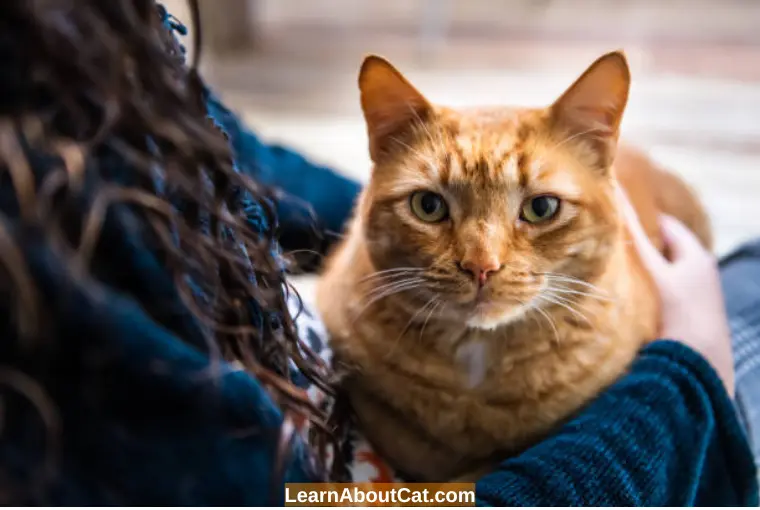
To determine the underlying medical condition causing wobbly gait and unsteady legs, your veterinarian will do a physical examination on the animal. This might include a blood test, x-rays, scans, and other tests. Depending on their findings, your veterinarian will be able to suggest a course of medication to minimise the symptoms and/or correct the issue.
Making adjustments like switching to a litter pan with low sides, providing them with a warm and cosy bed to relax in, and limiting vigorous activity might be helpful.
Accidents on the toilet are common when a cat’s legs can’t move properly. The cat may find it uncomfortable or challenging to access or exit the litter box. You could also notice that your cat is being unfriendly or unhappy more often than normal.
Frequently Asked Questions
Can arthritis in cats be treated?
Yes, arthritis in cats can be treated with medication, supplements, and lifestyle changes.
Is muscle weakness in cats a serious problem?
Yes, muscle weakness in cats can be a serious problem and should be evaluated by a veterinarian to determine the underlying cause and provide appropriate treatment.
Can neurological problems in cats be cured?
It depends on the specific neurological problem and its severity. Some neurological problems in cats can be managed with medication and therapy, while others may not have a cure.
Are there any home remedies I can try for my cat’s walking problems?
While some home remedies, such as massage or warm compresses, may provide temporary relief, it’s important to have your cat evaluated by a veterinarian to determine the underlying cause of the walking problem and provide appropriate treatment.
Can cats with walking issues still live happy lives?
Yes, cats with walking issues can still live happy lives. With the appropriate treatment and accommodations, most cats can still enjoy their favourite activities and maintain a good quality of life.
Can my cat take ibuprofen?
Under no circumstances should you administer ibuprofen to your dog or cat. Although ibuprofen and naproxen are popular and useful drugs for treating pain and inflammation in humans, they should not be given to dogs. Dogs and cats may be poisoned or toxic by these medications.
Final Words!
It may be frightful to see a cat walking strangely with its back legs, which is often a sign that something is amiss. But if your cat appears unsteady or stumbles on its hind legs, try not to freak out. The only thing you can do is visit your veterinarian as soon as you can so the problem may be diagnosed.
Once the problem has been located, your cat should soon be able to walk properly again with the right treatment. Make sure to upgrade your house as well to provide your cat with the best possible living conditions. Even if your pet has incurable diseases, they may still have happy, fulfilling lives with the correct treatment and a caring owner.
Related Posts
Who is Isabella?
My name is Isabella, and I am a dedicated and knowledgeable cat enthusiast. With years of experience caring for cats and a deep love for felines, I made a mission to help other cat lovers navigate the challenges of cat ownership.


